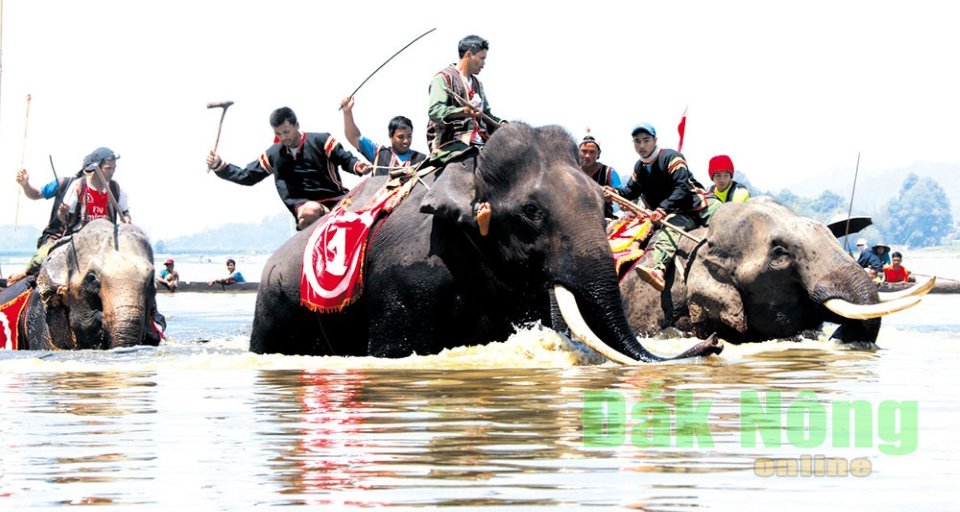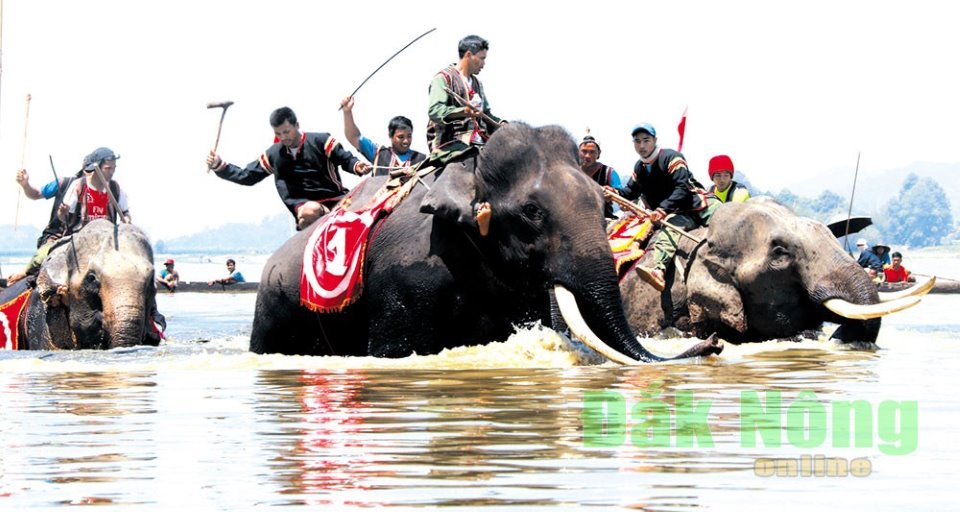
To the people of M’nong ethnicity as well as other ethnicities of the Central Highlands in general, elephants are not only considered as the huge properties of each family, they also hold a very important position in their spiritual life
 |
| Elephant is a huge property of M'nong people as well as the people of oher ethnicities in the Central Highlands. |
The legend has it that, a long time ago, there was a large lake located at the peak of Nam Kar mountain, which is home to a wide range of fishes, plants and bushes. Out of necesscity, a young man residing in this area came and catched the fish from this lake to make food without knowing that those fish are kept by the God of the Mountain.
Right after eating the fish, which had been roasted, the young man felt itchy all over his body while his face and limbs began to change their shapes quickly. All of a sudden , his ears spread out as wide as a paper fan. His nose grew as long as a whole metre. His belly grew so big that he can no longer walk on his two feet and he himself eventually turned into a giant animal, which is now known as the elephant.
As a human turning into an elephant, he ate so much that the people in that village could not afford to feed him. After so much thinking and unfeasible planing, the patriarch along with the witches in the village finally came up with an idea. They then made a compound of sticky rice, corn, cassava which is well cooked and then mixed together before being hung on a small bamboo plant. This compound was used to lure the elephant to come and eat.
While the elephant was eating the compound, the patriarch and witches were saying the magic words to make the elephant think and remember that their food is leaves. The elephant then got used to eating leaves, fruits and he went deep into the jungle to live.
Though living in the wilderness, the elephant still frequently came back to his old village, where he was born, to play and protect the villagers from evil power. When the elephant got older and died, Nguach Ngual, the God that kept control of the elephant, took hold of his tusks and then gave them people who are nice and in need.
As their the elephants have their origins from the human being and they are under the control of the God of Nguach Ngual, which is the reason for the there are a system of rites performed for the elephants since the time they were born or brought back from the jungle for being domesticated. Even when the elephants become mature and have long tusks, the cutting of their tusks is done only after their owners or someone with prestige in the village have made offerings to the Gods. The rite of making elephant-related offerings can be performed in various situations like before hunting the elephant, after the elephant being buy and brought home, admitting the elephants to the villages, giving name to the elephants, praying for good health of the elephant, to name but a few.
The rite for each situation are different in terms of the words to read and the offerings which are offered to the Gods. That means, aside from typical specialities such as Ruou can (a type of wine made from jungle's materials and drunk out of the container through the pipes), the meat of chicken, pork, M'nong people use their words to talk with and pray to the Gods. Particularly, in some very important situations like admitting an elephants to a village, praying for the elephant's health, people have to set up a stage to perform the offering rite.
Nowadays, in the belief and culture of M'nong people, elephant is still considered as the symbol of the strength and the wealth of the villages. That is the reason why they often tell their offspring about the legend of the elephant as a way to remind them to avoid causing the damages to the natural resources and keep maitaining ecological balance.
Source: www.daknong.org.vn